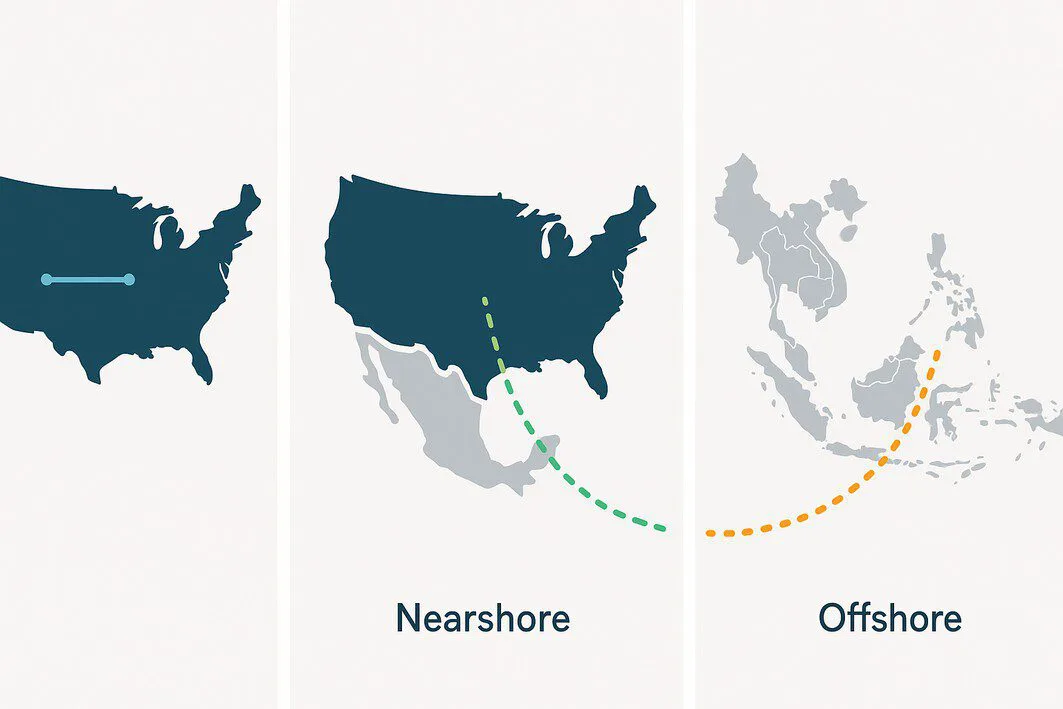As companies strive for greater efficiency, innovation, and cost-effectiveness, outsourcing has evolved from a simple cost-cutting tactic to a strategic business imperative. This is especially true in the complex and demanding field of engineering. But when leaders decide to explore this path, one of the first questions they ask is, what are the three types of outsourcing? Understanding these models is the first step to unlocking the full potential of your projects.
Table of Contents
This guide breaks down the main types of engineering services outsourced and provides clear examples to help you determine the best fit for your needs. By understanding the nuances of each approach, you can make a strategic decision that aligns with your budget, timeline, and project goals.
Why Outsource Engineering Services in the First Place?
Before diving into the “how,” it’s crucial to understand the “why.” Companies choose to outsource engineering for several key reasons:
- Access to Specialized Talent: Gain access to experts and niche skill sets without the overhead of a full-time hire.
- Cost Savings: Reduce operational and labor costs, turning fixed expenses into variable ones. Our clients often use tools like an ROI calculator to see the tangible financial benefits before committing.
- Increased Efficiency: Free up your in-house team to focus on core business functions while your outsourcing partner handles specific, time-consuming tasks.
- Scalability: Quickly scale your engineering capacity up or down to meet project demands without the lengthy process of hiring and onboarding.
Type 1: Onshore (Domestic) Outsourcing

Onshore outsourcing, also known as domestic outsourcing, involves partnering with an engineering services firm located within your own country.
What is Onshore Outsourcing?
You are essentially hiring a third-party expert who operates under the same national laws, speaks the same primary language, and likely shares a similar business culture. While you are still delegating the work to an external company, the geographic proximity is the defining characteristic.
Pros and Cons of Onshoring
- Pros: Seamless communication, no time zone differences, easier collaboration, and a shared understanding of local regulations and market standards.
- Cons: This is typically the most expensive outsourcing model, offering less significant labor cost savings compared to other options.
Engineering Services Examples for Onshoring
Onshoring is ideal for highly complex or sensitive projects that require frequent, real-time collaboration. This includes:
- Projects involving proprietary technology
- Final-stage product design and verification
- Work that requires deep knowledge of local compliance and government standards
Type 2: Nearshore Outsourcing
Nearshore outsourcing represents a middle ground, involving a partnership with a company in a neighboring country or one in a similar time zone. For a company in the United States, this often means working with firms in Canada, Mexico, or Latin America.
What is Nearshore Outsourcing?
The goal of nearshoring is to find a balance between the cost benefits of offshoring and the convenience of onshoring. You gain access to a talented, more affordable labor pool while minimizing the logistical headaches of large time zone differences.
Pros and Cons of Nearshoring
- Pros: A strong balance of cost-effectiveness and convenience, minimal time zone gaps allowing for real-time collaboration, and often strong cultural affinity.
- Cons: While cheaper than onshoring, it’s still more expensive than offshoring. There can be minor language or cultural differences to navigate.
Engineering Services Examples for Nearshoring
This model works well for projects that benefit from regular communication but don’t require constant, in-person oversight. Examples include:
- Software development
- CAD support
- Systems integration where teams need to sync up daily but can work independently
Type 3: Offshore Outsourcing
Offshore outsourcing is what most people traditionally think of when they hear “outsourcing.” It involves hiring a company in a distant country, often on a different continent with a significant time zone difference, such as India, the Philippines, or Eastern Europe.
What is Offshore Outsourcing?
This model is primarily driven by the opportunity to access a large pool of skilled talent at a significantly lower cost. It leverages global economic differences to maximize budget efficiency.
Pros and Cons of Offshoring
- Pros: The highest potential for cost savings, access to a vast global talent pool, and the ability to create a 24/7 “follow-the-sun” workflow where work continues around the clock.
- Cons: Significant time zone differences can complicate real-time communication, potential for cultural and language barriers, and requires robust project management and clear documentation to succeed.
Engineering Services Examples for Offshoring
Offshoring is best suited for well-defined, process-driven tasks that can be completed asynchronously. This includes:
- PCB layout design
- Data analysis
- Technical documentation
- Routine software maintenance
How to Choose the Right Outsourcing Model for Your Project

Selecting the right model isn’t about which one is universally “best,” but which one is best for your specific needs. Consider these factors:
- Project Complexity: The more complex and iterative the work, the more you’ll benefit from the closer collaboration of onshore or nearshore models.
- Budget: If cost is the primary driver, offshoring offers the most significant savings. Our comprehensive knowledge base helps clients weigh these financial trade-offs effectively.
- Communication Needs: Do you require daily stand-ups and real-time problem-solving? Nearshore or onshore is likely a better fit.
- Timeline: A “follow-the-sun” offshore model can dramatically accelerate timelines for certain types of work.
Making an informed decision requires a deep understanding of your project’s scope and goals. For a more detailed breakdown, we encourage exploring the specifics of engineering services outsourcing to ensure you choose the right partner and model.
Conclusion: Can Engineering Jobs Be Outsourced? Yes, and Strategically.
So, can engineering jobs be outsourced? The answer is an unequivocal yes. From complex design to routine drafting, there are various types of engineering services outsourced by successful companies every day.
The key is to move beyond simply asking if you should outsource and instead focus on how to do it strategically. By understanding the differences between onshore, nearshore, and offshore models, you can choose the approach that delivers the right blend of talent, cost, and collaboration for your unique projects, turning a simple tactic into a powerful competitive advantage.

